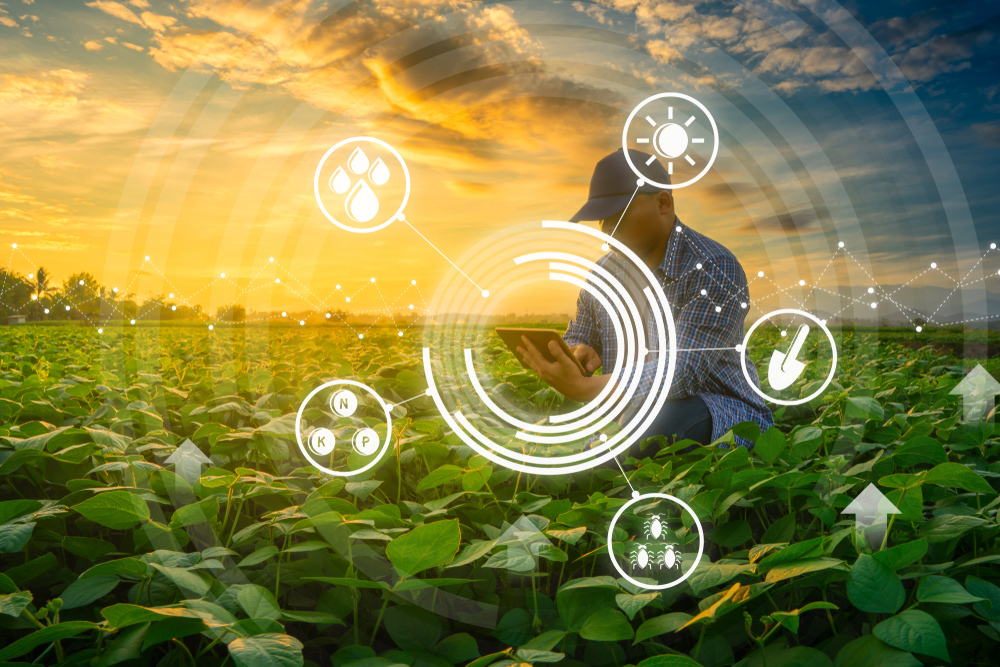The digital divide needs to be bridged for the benefits of technology to reach the marginal farmer.
The world population is expected to hit 9.9 billion by 2050, which could lead to a tremendous increase in the demand for food which further puts upward pressure on food prices. To ensure a sustainable future, every stakeholder in the food ecosystem needs to contribute positively, develop and enforce practices that will optimize the use of natural resources, and reduce the impact on the environment.
[box type=”success” align=”” class=”” width=””]To achieve the UN Sustainable Development Goal of a “world with zero hunger”, to build self-reliance and improve food security, all the actors in the food system need to come together and work towards making it a reality. There will be a need for investment in rural and urban areas to socially protect the poor and ensure access to food and better living conditions. [/box]
There is a need for the complete transformation of the current agricultural system. The digital divide needs to be bridged for the benefits of technology to reach the marginal farmer.
The technical infrastructure in developing economies and deep rural areas is still lacking, and costs are high. The lower level of literacy, lack of access to digital connectivity, and limited data availability result in these segments being underserved in carrying out effective farming decisions. There is an opportunity for developing economies to crossover directly to a digital agricultural revolution, provided policymakers are savvy enough to think radically along with multilateral organizations and businesses.
The need of the hour
The future of agriculture is a critical issue for planners and all actors in the agricultural ecosystem. For an agrarian economy to move forward, it is essential to reduce agriculture risk, reduce poverty and achieve sustainable development. Technological interventions can improve the situation of farmers and help the entire agricultural sector become efficient, transparent, productive, profitable, and responsible. Whether the data is obtained from satellite imagery or collected from the ground, data analytics and Artificial Intelligence interpret it to create real-time actionable insights for farmers.
Impact of technology on farmers
Today, farmers use data analytics and AI to be proactive, more effective, agile, and more equipped to protect the environment while contributing to the global food supply. The need of the hour is to enable farmers with easy-to-use technology-enabled solutions that help them generate predictive insights in farming operations and help them in real-time operational decisions. Encouraging farmers to adopt digital solutions in their daily operations will require committed long-term efforts on the ground. However, once they see the effectiveness of the technology, they are quick adopters.
Geotagging of plots is an important step to ensure seed-to-shelf traceability, optimize farming operations and improve farmers’ credibility in export markets. Development agencies and the BFSI institutes can utilize technology solutions to assist farmers with their financing needs to boost productivity. Digital agriculture will create ecosystems that are productive, preemptive, and adaptable to external changes. It should naturally result in improved food security, enhanced profitability, and better sustainability.
[box type=”success” align=”” class=”” width=””]Precision agriculture uses technologies such as Satellite data, drones, smart irrigation systems, IoT etc. which helps in optimum utilization of farming resources. The intervention of smarter solutions has the potential to transform the entire farming sector and give farmers with small holdings a realistic opportunity to improve their crop yields and get better prices. [/box]
Digital Connectivity – The way ahead
The Digital revolution has created more efficient, equitable, and environmentally sustainable ways to feed the world. The combination of smartphones and low-cost data has revolutionized how information is available and used across the globe. Imagine the power of data unleashed if all farmers had a smartphone. They can stay connected with all their stakeholders. This provides better market access- better prices for produce, effective decision making via the right alerts and advisories, which can help farmers make better choices. The government can use this network to generate awareness, share information and transfer money digitally under various government schemes.
We are just getting started on an exciting journey to become more digital-savvy and expect accelerated growth over the next few years. Improved digital connectivity and data storage capacity will contribute to this. Digital farming cannot replace hard labor and centuries of knowledge but minimizes the risk of sub-optimal decisions by giving farmers access to real-time insights that help them work more efficiently throughout the crop cycle.
Conclusion
Digital agriculture can transform the lives of marginalized farmers across the world. These solutions allow farmers to have access to the most accurate information, adopt best cropping practices, increase harvest quality, and the opportunity to connect with the right consumers to get the right prices for their produce. For this transformation to materialize fully, all stakeholders- governments, agribusinesses, and development organizations, must work together to support digital agriculture and develop an advanced agriculture ecosystem.
A holistic multi-stakeholder approach is needed to improve the livelihood of farmers and address complex farming challenges.
Private sector engagement is required along with several government interventions to bridge the knowledge, financial, and capacity-building gaps. The appropriate funding commitment is required to provide readiness and preparatory support for technology deployment and diffusion. Such stakeholder participation is required to make technology solutions become socially acceptable and technically and economically practical.
This article is authored by Kunal Prasad, Co-founder, Cropin



